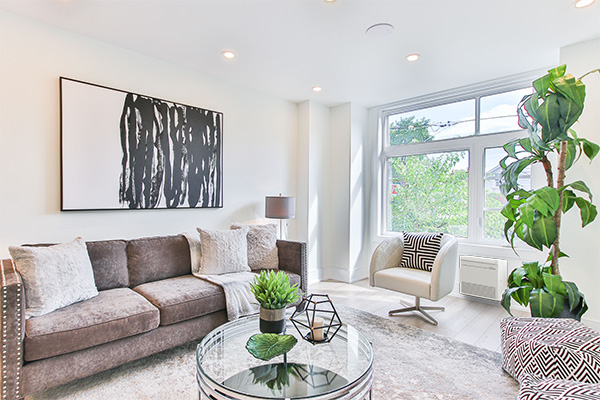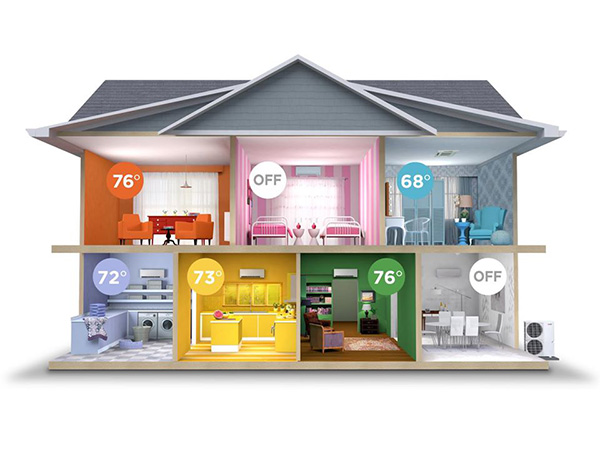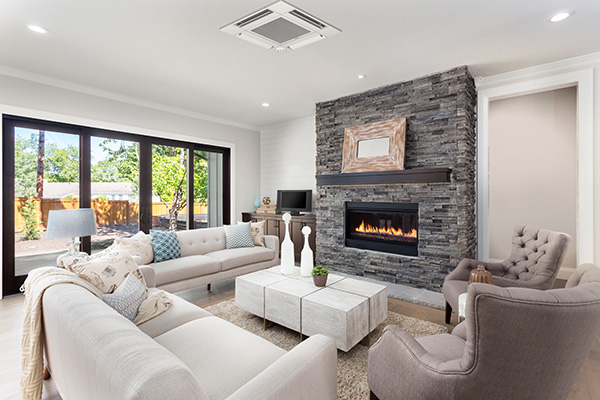Like most people today considering converting to a heat pump system, your very first question is likely, “How much will it cost to install a ductless heat pump?”. And we totally get it, going ductless is a big decision, and cost is understandably one of the most important factors for many homeowners.
There is a lot that goes into the estimate for ductless heat pump system installation, and every installation is different. We won’t be able to go into detail on every consideration on this page. Instead, our goal is to equip you with the general considerations and their potential impact on your quote so that you can go into a conversation with one of our experts feeling informed. And, to provide upfront information about why we recommend certain things and why we think their added value exceeds the added costs.
The cost of your project is mainly determined by the size and number of rooms you want to condition with the new system(s) in your home, how many outdoor units and indoor units your chosen project requires, and the size of the equipment needed. How well insulated your home is is also a big factor. Older homes, especially those built prior to the 1970s, are notorious for poor insulation and will require larger units to provide adequate heat.
The other major influence on the overall cost is what energy rebates and manufacturer incentives you qualify for. PSE electrically heated homes rebates, manufacturer incentives, tax credits, and other locally available incentives can add up to savings of hundreds or even thousands of dollars taken off the cost of your installation. For the latest information about all of these, visit our Savings and Rebates Programs page.
Our goal at Island Ductless is to provide you with the highest value bid. It starts with our Island Ductless Sales Rep working with you to come up with a comprehensive plan that takes every variable into account: your space, your needs, and your future. Then providing expert, quality installations, followed up with regular service always available for Island homes. All while keeping pricing competitive, often far less than contractors coming from off Island.
Now, let’s take a deeper dive into the details of all these considerations that determine the cost of each installation!
Homes that have a central and open main living space (think kitchen, dining room, and living room in one large open space) are excellent candidates for a minimal ductless heating system because a single indoor unit can provide climate control for the entire area, offering a great return on investment. A basic installation like this usually starts around $5,000 − $7,000 for the entire project. However, your final cost may be significantly lower depending on what rebates, incentives, reimbursements, and tax credits you qualify for.
Note: Many incentives programs are based on you converting to ductless heating to condition the main area of the home, so installing a system here can also increase your savings potential. Learn more about savings and rebate opportunities here!
Many homeowners opt to place one indoor unit in their primary living area and another in the master bedroom, giving them precise control over their frequently used spaces. These modest size installations usually start at $7,000 − $10,000 and, again, can be significantly less due to rebates, etc.
What if you have a multi-story home or multiple separate rooms and each needs climate control? Don’t stress, we will help you decide on the very best and most cost-effective solution for every space in your home! We will recommend strategies to save costs while staying comfortable, such as installing mini-split units in the areas you spend the most time in and supplementing your other spaces with Cove Heaters that are both lower cost and more efficient than conventional wall heaters. This approach would be for a larger size, whole home conversion. The cost usually would start at $10,000 − $15,000.

It’s simpler to replace some heating systems than others.
Cadets or base board heat is easier to replace due to their individualized placement, as opposed to replacing a centralized system like forced air or electric boilers. This is because they serve individual spaces, like ductless heating does. Often homeowners will choose to leave these in rooms that are seldom used, while installing mini-splits in the rooms they spend the most time in and/or want cooling for.
Converting a home that has centralized heating is a larger and more expensive project. One that’s still well worth undertaking, considering the improved comfort and lower ongoing energy costs of a ductless system. For these cases, we will design a comprehensive system to encompass the entire home and replace the previous centralized system.

You don’t need to install an indoor unit in every room. As we mentioned in the sections above, most homeowners choose to add units where they spend the most time or need the most climate control.
You can work with one of our experts to determine which spaces will give you the greatest return on investment.

The initial investment in converting to a ductless heat pump system is worth careful consideration. Even if you know the long-term savings potential, it can be tempting to keep pushing off making that final decision.
But the savings benefits may start sooner than you think. Taking advantage of rebates and financing options allows you to both lower the total cost and spread out those costs over time. In some cases, these monthly payments may actually be lower than your current energy bills for an inefficient heating system! Our experts can help walk you through your specific calculations during the proposal process.

Many homeowners consult with several ductless heat pump installers. When evaluating multiple different bids, it can be hard to know what to look out for to indicate a truly “competent proposal.” Here’s our take:
Every installation is unique, so it doesn’t make sense to use one-size-fits-all bids. Bids from experienced, quality-focused companies will include tailored estimates and plans for your specific situation. For a more detailed list of what to look for in a proposal, check out our blog on the subject.

Serving Whidbey and Fidalgo Island communities – Anacortes, Clinton, Coupeville, Freeland, Greenbank, Langley, Oak Harbor

Copyright 2025 Island Ductless Heat Pumps. All rights reserved. Privacy Policy.